As a budding photographer, you’re constantly learning and discovering new aspects of the craft. One fundamental but often overlooked component of photography is EXIF metadata. It may sound technical and intimidating, but fear not – this beginner’s guide will demystify EXIF metadata and show you why it’s essential for photographers.
What is EXIF Metadata?
EXIF stands for Exchangeable Image File Format, and it’s a standardized way of storing metadata within image files. Metadata, in this context, refers to the information about the image itself. This data can include various details about how the photo was taken, camera settings, and even the date and time of capture. Think of it as a digital fingerprint for your photos.
Here are some common types of information found in EXIF metadata:
1. Camera Settings:
- Aperture: The f-stop value used for the shot.
- Shutter Speed: The duration the shutter was open.
- ISO: The sensitivity of the camera’s sensor to light.
- Focal Length: The lens’ focal length at the time of the shot.
2. Date and Time:
- Date: The date the photo was taken.
- Time: The time the photo was taken, including time zone information.
3. Location:
- GPS Coordinates: If your camera or smartphone has GPS capabilities, it can record the precise location where the photo was taken.
4. Copyright and Authorship:
- Copyright Information: Information about the image’s copyright and authorship.
Below shows the screenshot of an image with EXIF metadata using Exif Viewer App by Fluntro on iPad:
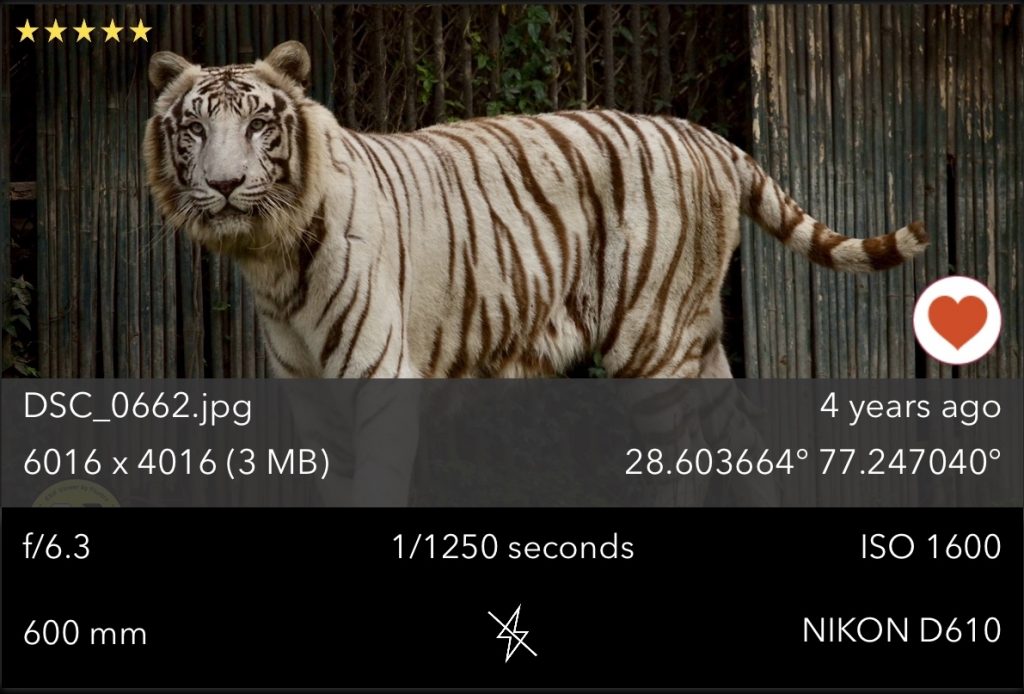
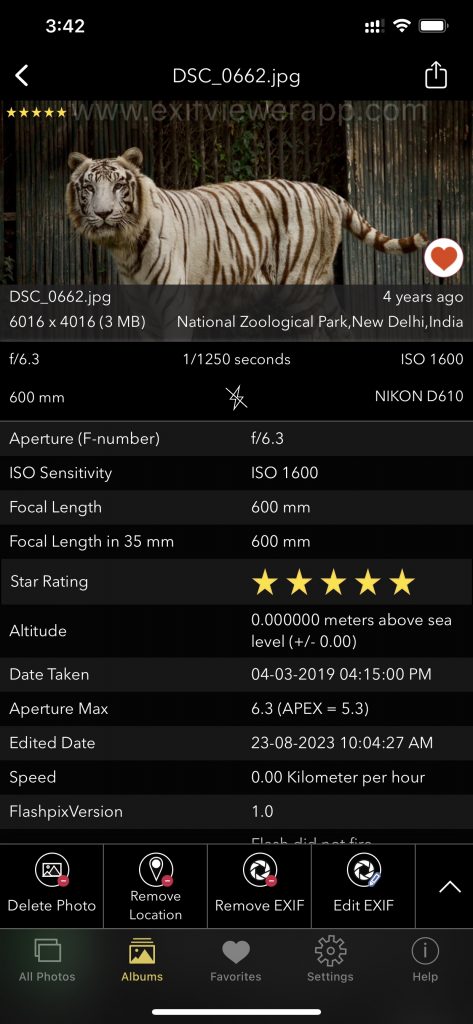

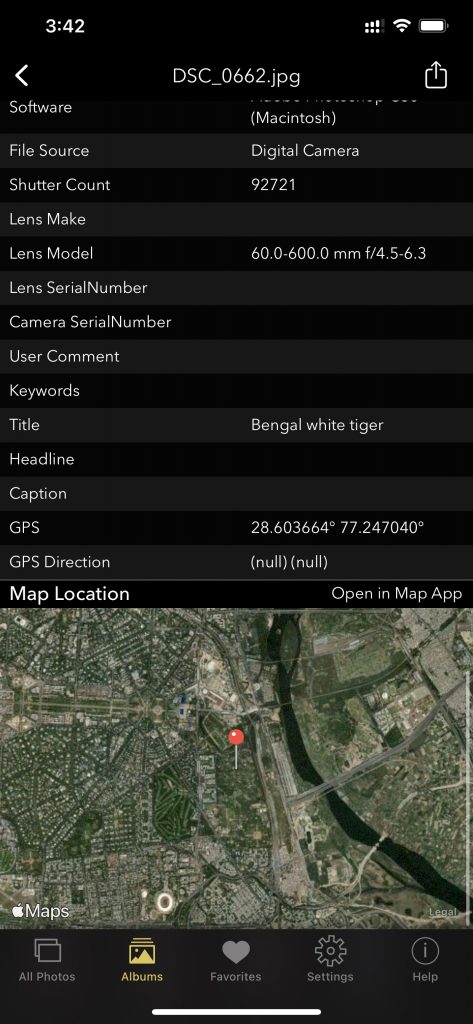
Why is EXIF Metadata Important for Photographers?
Understanding and utilizing EXIF metadata can greatly benefit photographers in several ways:
1. Learning Tool:
EXIF metadata provides a valuable learning resource. By examining the settings used for each photo, you can gain insights into what works and what doesn’t in various shooting conditions. Over time, this can help you improve your photography skills and make more informed decisions about camera settings.
2. Replication and Consistency:
When you capture that perfect shot, you’ll want to replicate it in the future. EXIF data allows you to replicate camera settings and conditions, ensuring consistency in your work.
3. Troubleshooting:
If you encounter issues with your photos, such as exposure problems or focusing errors, EXIF metadata can be a valuable diagnostic tool. You can review the settings used for the problematic shot and identify areas for improvement.
4. Post-Processing:
When you edit your photos, having access to EXIF metadata can be a game-changer. You can see the original settings and conditions, making it easier to fine-tune your post-processing to achieve the desired result.
5. Provenance and Copyright:
EXIF metadata can also serve as proof of ownership and copyright. If someone uses your photo without permission, you can use the metadata to demonstrate that you are the rightful owner.
How to Access EXIF Metadata?
Accessing EXIF metadata is relatively straightforward. Here’s how you can do it:
1. Using Photo Editing Software:
Most photo editing software, such as Adobe Lightroom and Photoshop, allows you to view and edit EXIF metadata. Simply open the image in the software and look for an option like “File Info” or “Properties.”
2. Online Tools:
Numerous online EXIF viewers are available, where you can upload an image, and the tool will provide you with all the metadata information.
3. Smartphone Apps:
There are also smartphone apps that can display EXIF metadata for images saved on your device. For iOS user we suggest Exif Viewer by Fluntro.
Highly Recommend to try out Lite (Free Trial version) first
EXIF Viewer by Fluntro Lite to view Photos resolution in EXIF Metadata before downloading Paid Full version.
Appstore link of Free Lite version :- https://apps.apple.com/us/app/exif-viewer-lite-by-fluntro/id979066584
Appstore link of Paid Full version :- https://apps.apple.com/us/app/exif-viewer-by-fluntro/id944118456

Get two apps by Fluntro Team :Exclusive Bundle Offer
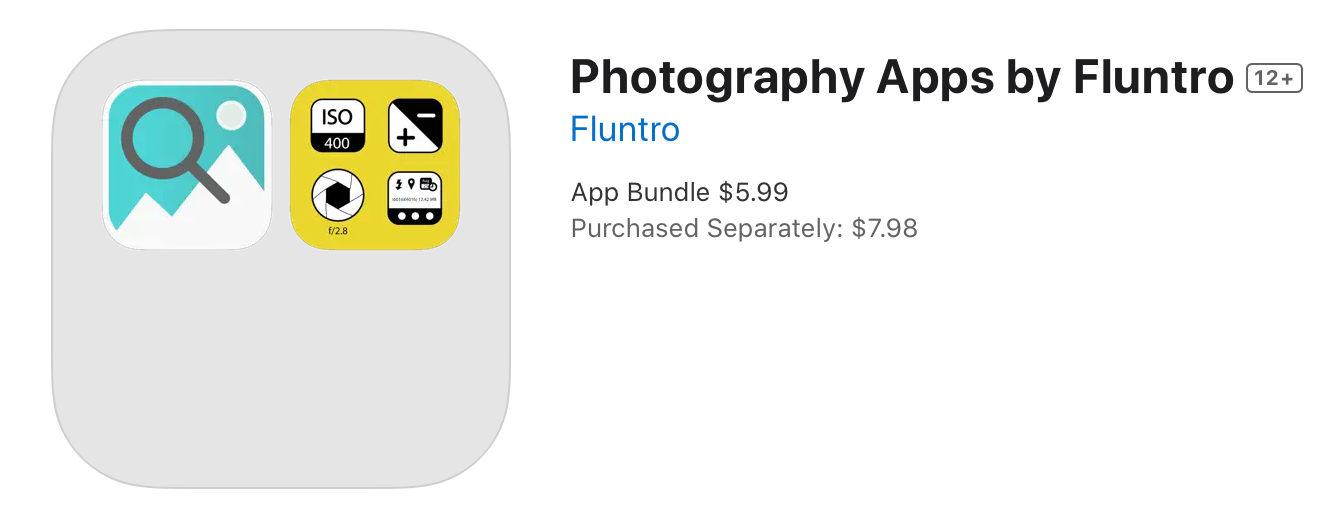
“Exif Viewer” for $2.99 and “Photos Search” for $4.99
Just for $5.99 instead of $7.98

EXIF metadata is an invaluable resource for photographers at all skill levels. It provides insights into your photography, helps you troubleshoot issues, and offers a means of proving authorship and copyright. So, the next time you capture that breathtaking shot, don’t forget to delve into the EXIF metadata – it’s a treasure trove of information waiting to be explored, and it might just be the key to unlocking your photography potential.
CHECK THESE APPS FOR YOUR IPHONE AND IPAD:
1. PHOTOS SEARCH BY FLUNTRO
YOUR ULTIMATE PHOTO DISCOVERY COMPANION!
Photos Search app takes image searching to a whole new level by allowing you to search for text within photos effortlessly. Unleash the potential of your visual content and discover a seamless way to find and organize your images based on the words they contain. Whether you’re a professional photographer, an art enthusiast, or simply someone who loves exploring beautiful imagery, PhotoSearch is here to make your search for photos a delightful and hassle-free experience.

AppStore Link: https://apps.apple.com/app/photos-search-by-fluntro/id6471649312
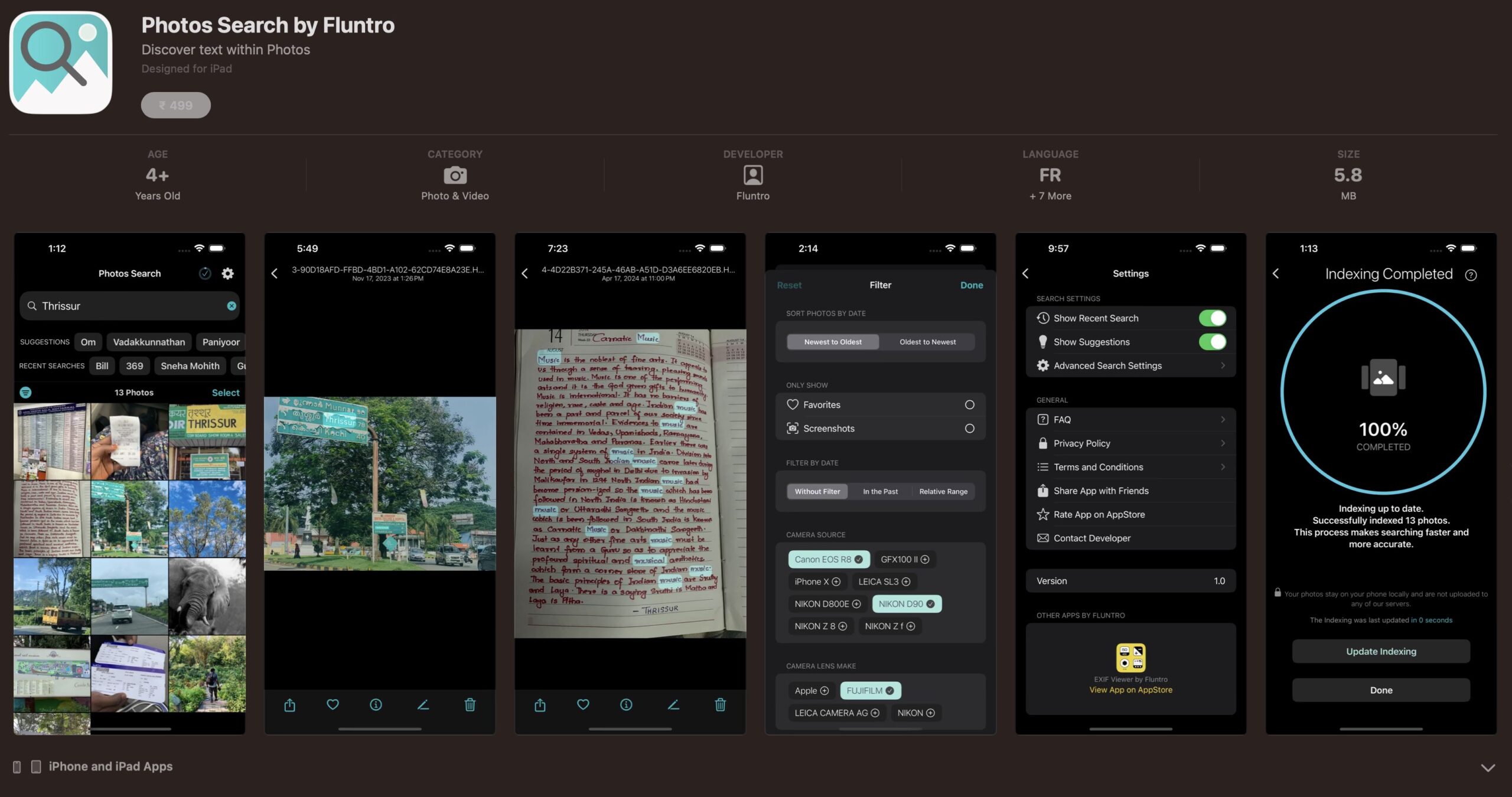
2. KIANA
CUTE ELEPHANT STICKERS FOR IMESSAGE AND IOS
Express yourself with Kiana the Elephant’s adorable sticker collection!
With 66 charming stickers, there’s a cute expression for every mood. From daily chats to special moments, Kiana add joy and whimsy to your conversations. Share laughter, love, and fun with friends and family through these delightful illustrations. Explore a world of playful expressions, featuring Kiana in a variety of charming poses. Spice up your messages with Kiana: Adorable cute elephant stickers today!

Appstore link :- https://apps.apple.com/us/app/kiana-cute-elephant-stickers/id6504343965
